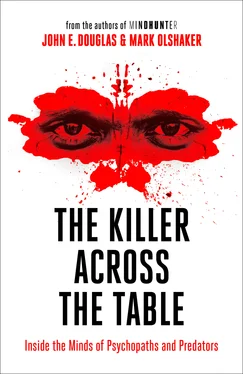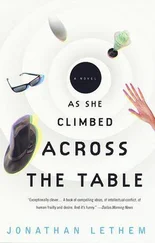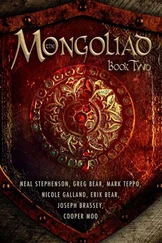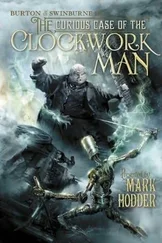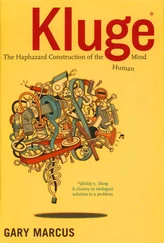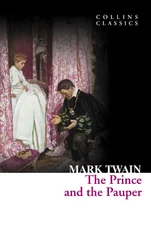1 ...7 8 9 11 12 13 ...18 We believe these events only occur once in a lifetime of such individuals. A series of circumstances are necessary to provoke the incident. If the girl had not come to his home that day or, perhaps, if he had two dollars instead of only one dollar and a twenty-dollar bill, the event would not have taken place, at least at the present.
Clearly, the crime would not have taken place had Joan not showed up at the McGowan house and rung the doorbell. She was a tragic victim of opportunity. Beyond that, from what I knew from my own study of the criminal mind, I wasn’t sure how much I agreed with the various psychological reports.
Which evaluation was closer to the mark: Dr. Effron’s opinion that “he may act out again,” or Dr. Revitch’s conclusion that “these events only occur once in a lifetime of such individuals”?
I reserved judgment until I actually talked to McGowan myself.
4
HUMAN FALLOUT
If there is one word I’ve found that survivors of murder victims detest, it is closure. The media, the public, well-meaning friends, and even the judicial system itself often feel that this is what all grieving loved ones are seeking so they can “put this behind them and get on with their lives.”
But anyone who has “experienced” a murder knows there is no such thing as closure, nor in fact should there be. The mourning process will go through stages and eventually the pain will become less unbearably acute, but it will never go away, any more than the hole in one’s personal universe left by the loss of the victim and the erasure of a lifetime of promise will ever be filled in.
The Girl Scouts sent a sympathy card. Other than that, no one in any official capacity made the effort to contact the family.
The emptiness really started, Rosemarie says, “after the burial, when everyone left and went back to their own lives.” The most important thing for her at that point was to keep life as normal as possible for Frankie and Marie. “I made sure Marie stayed in Girl Scouts because she wanted to, even though it was painful for me even to think about Girl Scout cookies. We stayed in the same house, so the familiar things would still be there, like school and friends, and not having more changes to deal with. I tried not to be overprotective. I let them continue to go out and play, though I was always attentive to their whereabouts. They had to be children and I didn’t want to be paranoid.”
Nor would she shield them from the ongoing news about their little sister’s case. “I would tell them both what was going on so they would hear it from me. I knew they would be hearing things and I didn’t want them to hear in a scary way. We would sit on the bedroom floor and talk about anything they had on their minds. They looked forward to that and knew they weren’t being left out.” Rosemarie and Frank took them to the cemetery on various occasions to visit their “sister in heaven.”
Rosemarie came to accept the reality that her love and pain could not be separated. “I have felt a relationship with Joan in my heart all these years,” she says. “It’s a relationship I wouldn’t have chosen, but it’s still a relationship that inspires me to do what I do. And I found there is a peace that comes with that.”
It was not all Rosemarie had to contend with. Seven months after the murder, her beloved father died of cancer. He had adored his granddaughter and never stopped grieving for her.
Rosemarie went to the court hearing when McGowan pled guilty. She felt she had to be there for Joan. Genevieve McGowan was there, too. “When I walked into the courtroom, she gave me the coldest stare I have ever experienced in my life. It was the first time I had ever seen her.”
Rosemarie would not have minded if McGowan had stood trial so that the truth would have come out and nothing would have been held back, including the details of what had happened to Joan. But as often happens, other types of details began filtering back to her. One of the most appalling was when she heard through a friend that Genevieve had told an acquaintance from church that she hated Rosemarie, because if it hadn’t been for her, Joe wouldn’t have killed Joan and gone to prison.
And then there were the persistent challenges from her own body. The first inkling, when she stopped to think about it, had come years earlier, when she was a nineteen-year-old in New York. One day she was running for a bus. Suddenly her leg felt tense and then gave out on her. She didn’t know what it was, but it didn’t recur, and she didn’t think much about the incident.
A few years later, when she was pregnant with Marie, she was feeling exceptionally tired and knew it wasn’t the normal fatigue of pregnancy.
She tried to work out her own strategies and coping mechanisms for dealing with her unknown affliction. “I had to develop my own strength through focus and determination.”
When Joan was born, the tiredness became more pronounced and she was forced to hire help, which she kept until the baby was six weeks old. The ongoing symptoms were vague and fluctuating, and seemed to affect various regions of her body. “It got worse as the day went on and was worst in the late afternoon. I knew I had something.” The one common denominator was the extreme fatigue and the knowledge that she had a limited amount of energy on any given day, and if she used it up, there would be consequences going forward.
She went to doctors, but they couldn’t find anything. Or they told her it was a physical manifestation of postpartum depression. Or it was a virus and she would get over it. But she didn’t get over it, and “if I didn’t rest, I would pick up infections regularly.”
It wasn’t until a year after Joan’s death that Rosemarie finally got an accurate diagnosis. She checked into Mount Sinai Hospital in New York and submitted to an extensive battery of tests. A neurologist there concluded that she was suffering from myasthenia gravis, a neuromuscular disease caused by the breakdown in normal communication between nerves and muscles. It is an autoimmune disorder that can be related to thymus gland abnormalities, with minimal or no relationship to one’s genetic background. There was and is no cure, and treatment centers on trying to alleviate symptoms that, in addition to the severe fatigue and weakness, can involve drooping eyelids, double vision, slurred speech, difficulty chewing and swallowing, and even trouble breathing.
“They told me every case of MG is different. If I pace myself and stay organized, it’s a little better,” she says, but adds, “I do take risks, and that is when I get the most joy out of life. In fact, I think it makes me appreciate moments of joy so much more because this condition makes the experiences so pointed.”
After a miscarriage, two of those joys occurred in 1980 and 1982, when Michael and John were born. Frankie and Marie were already in their teens, so for Rosemarie and Frank, it was like having a second generation of children.
But the joy would not last. Frank lost his job, and their marriage started to fail. “Even though he found another good job, he was lashing out at us more,” Rosemarie says. “And when John was eight, I witnessed inappropriate touching and other gestures.” Throughout all the trials, Rosemarie was sustained by her religious beliefs and devotion. “In my faith,” she commented, “God was always my psychiatrist. After what happened to Joan, I asked Him to help me choose a life without animosity, and instead, a life advocating for prevention, protection and justice.”
In the early 1990s, around the time Michael was eleven and John was nine, Frank moved downstairs. Rosemarie knew it was just the next step on a road that led in only one direction. “I was going to go for a divorce in 1993—on September 7, Joan’s birthday,” she related.
Читать дальше
